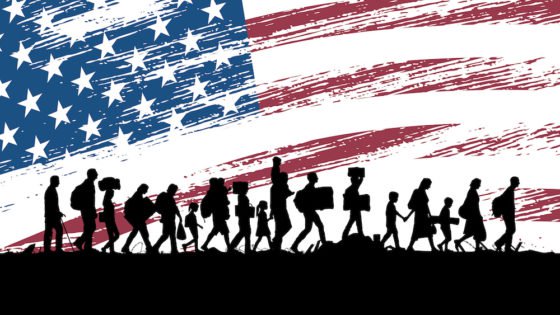[ad_1]
ROMANIANS…
JERRY SEINFELD: (making an attempt desperately to make dialog) So, Ceausescu. He should’ve been some dictator.
KATYA [A guest character, she is supposed to be a Romanian gymnast who won a Silver medal in the 1984 Olympics] : Oh sure. He was not shy about dictating.
JERRY: He, uh, he should’ve been dictating very first thing within the morning. “I need a cup of espresso and a muffin!”
KATYA: And you can not refuse.
JERRY: No, you’d must be loopy.
KATYA: He was a really dangerous dictator.
JERRY: Sure. Very dangerous. Very, very dangerous.
(from the American tv comedy collection, Seinfeld, episode entitled “The Gymnast,” aired 3 November 1994, a number of websites, see for instance, http://www.seinology.com/scripts/script-92.shtml)
HUNGARIANS…
TONY KORNHEISER: “Thanks, Julian…people, Julian Rubinstein, creator of ‘The Ballad of the Whiskey Robber’ [a Hungarian bankrobber of the 1990s whose cover was playing ice hockey], might be on the ‘Hungarian-American Basis’ tonight…What’ll they’ve there? [Laughing] Gulash, sure, they will have popperkash [sic]…”
ANDY POLLIN: [Laughing] Possibly Zsa Zsa [Gabor] might be there…
(creator’s gist of a dialog heard on the sports activities speak/comedy radio program “The Tony Kornheiser Present,” 2 December 2004, 9 AM Hour, WTEM 980 AM, Washington, D.C.)
Half I: Introduction
Larry Wolff, Maria Todorova, Vesna Goldsworthy and different students within the improvement and unfold of Western photographs and stereotypes of the peoples of jap Europe understandably have centered their analysis on travelogues, performs, novels, oper(ett)as, work, and so on. This is smart and is methodologically acceptable since these are the artifacts of the age by which these ethnonational photographs and stereotypes got here to be specified, recorded, and communicated to audiences bigger than the one in direct earshot. However the content material and context of those photographs and stereotypes should not static, and neither are the means by which they’re communicated. During the last century, and significantly half century, technological and media innovations–primarily within the type of mass communications (movies, animated cartoons, radio, tv, the Web)–have modified how ethnonational photographs come into being and are conveyed to others. This alteration has arguably decreased the function of conventional (particularly mental) elites in shaping the content material of ethnonational photographs, whereas concurrently enhancing the function of the viewers in figuring out which photographs “take” and which of them artistic intellectuals, journalists, and others will use of their work.
Mockingly, the very level that’s on the heart of the analysis of Wolff, Todorova, et. al.–that these ethnonational photographs weren’t all the time what they turned later, or are today–has in some way gotten misplaced, together with of their utility of their very own theories to the latter a part of the 20th century. This departure from their mental assumptions has occurred although circumstances such because the expertise revolution, marketization, globalization, and democratization clearly problem and reshape–and have challenged and reshaped–individual and collective identities. It’s one factor to say that ethnonational photographs advanced, however hardened over time, and proceed to form how peoples view themselves and others, regardless of such adjustments. It’s fairly one other to say, as many on this constructionist literature appear to, at the least implicitly, that in some way this evolution turned frozen in time, that these photographs, after a protracted interval of evolution, “consolidated” and now are basically impervious to significant change–that is, that every little thing is merely déjà vu throughout and again and again and once more.
The 2 excerpts I’ve invoked above counsel the arbitrary, idiosyncratic, and infrequently personality-contingent and event-driven character of contemporary ethnonational photographs of Hungarians and Romanians in the USA. These photographs are set in opposition to a backdrop of, influenced by, and feed upon the broader preexisting photographs outlined by students of the “first era” of picture and stereotype creation (the constructionist literature described above), however they’re neither a subset of, nor beholden to, these first order photographs. Furthermore, the interaction between televised photographs and the viewers who watches them (i.e. as shoppers who can vote-with-the-remote so-to-speak)–as nicely because the Web’s empowering capability to encourage and facilitate particular person expression and participation–means that energy over the content material and that means of those ethnonational photographs has devolved extra to non-traditional elites (journalists, producers, media executives, enterprise folks) and the mass viewers compared with the scenario that prevailed previously.
Regardless of the “Japanese (European)” classification of Hungarians and Romanians, the detrimental Hun/Mongol/Asian/Oriental connotations of the Hungarians and the “Balkan” traits of Romanians, and the final “neo-orientalist” remedy of this “second/third world” or “semi-periphery/periphery,” the precise content material of in style and media photographs of Hungarians and Romanians is way much less foreseeable, and extra internally and externally numerous, than such overarching, generalizable theories of externally-created and imposed cultural building predict. (I shall make use of Csaba Dupcsik’s time period “Euro-Orientalism” right here to seize collectively the concepts of Wolff, Todorova, Goldsworthy, Bakic-Hayden and others.)
Furthermore, the constructs of this literature have a tough time accounting for one thing that derives from the excerpts above and recurs all through this paper: the distinction between Romanian photographs, which I’ll argue are usually newer and political (from the Seinfeld episode, Nicolae Ceausescu and a Nadia Comaneci-like gymnast)–and, as a consequence, weak to vary in content material and connotation–and Hungarian photographs, which are usually older and extra “cultural” (from the sports activities radio speak present: goulash and Zsa Zsa Gabor) and static. Though the cultural constructionist mannequin of Western image-creation and imposition doesn’t absolutely spell out its assumptions and expectations, primarily based on its remedy of the idea of “Central Europe” its underlying logic would appear to counsel that the extra “Japanese” a folks, the extra simplistic and pejorative the ethnonational photographs and stereotypes attributed to that folks, the extra indistinguishable that folks is from the remainder of the “unwashed” peoples of the non-West, and the extra rigid the pictures and stereotypes. Not less than within the comparability of Hungarian and Romanian photographs within the West, this doesn’t seem like the case, and that begs the query: why?
General, I conclude from an examination of representations of Hungarians and Romanians in fashionable American media and popular culture, that compared to each other, to different peoples from central and jap Europe and to peoples from western Europe, the neo-orientalist (Todorova’s distinctions and caveats of her personal mannequin however) bent of a lot of the work that research photographs of “Japanese Europeans” oversimplifies and overstates the image. As I’ve already hinted, a part of this derives from the sources, medium, and time interval chosen by these students for research. One other half, nonetheless, I’d argue derives from the reification and sclerosis of this tutorial vantage point–one that at occasions appears unable to beat its elitist roots. All of this stated, I don’t fully conclude that the neo-orientalist perspective has nothing helpful to contribute. For one among my conclusions is that photographs of Hungarians within the American creativeness are older, extra consolidated, much less topic to modification, and extra numerous than contrasting photographs of Romanians. The stockpile or archive of photographs of Romanians tends to be smaller, much less differentiated, extra political, and newer. A part of this I hypothesize is unfair, however offers with the timing of the incorporation of ethnic images–itself a consequence of journey to the nation, emigration from that nation, and the timing of contemporary nationwide consciousness and id actions in that country–into western European/English-speaking/American consciousness. Like Gerschenkron’s late creating states, late creating nations face a unique algorithm, or at the least extra restricted options–a selection between irrelevance and ignorance, less-than-desirable stereotypes, or the potential of exploiting comparative benefit of that stereotype regardless of how unsatisfying and patronizing it might be.
Here’s a preview abstract of my findings then:
1) The vary or universe of ethnonational photographs of both Hungarians or Romanians in North American movie and tv is extra numerous, extra internally contradictory, and fewer predictable than neo-orientalist assumptions appear to permit for.
2) Neo-orientalist assumptions show considerably ahistorical. Accident and absence of intention are filtered out on reflection, and intention and malice are assumed of their place with a view to create a coherent narrative.
3) Concrete, particular person, idiosyncratic photographs show rather more enduring and influential than the pale summary assumptions related to the neo-orientalist mannequin. It’s these that continuously differentiate peoples within the in style thoughts and which are extra impervious/rigid to vary.
4) Partly due to the function of particular person photographs, televised photographs/footage show extra compelling and lasting.
5) This factors us towards the affect of tv, movie, and the Web–media largely ignored within the earlier constructionist, neo-orientalist analysis, analysis which, surprisingly, whereas emphasizing the function of latest mass media equivalent to novels and travelogues that introduced new peoples and locations into the Western consciousness, and whereas stressing that photographs have modified over time (i.e. weren’t what they have been later to develop into), underestimates or ignores each the capability for change and the function of latest media in id and picture formation.
6) The difficulty of contemporary media, in style inclusion/consumption tradition, and so on. brings us to the query of viewers and highlights the hyperlink between expertise and broader market entry in figuring out picture choice, formation, and endurance. The neo-orientalist perspective focuses excessively on elite management and dissemination, suggesting audiences are labile and simply manipulable, and putting virtually no significance on the function of viewers in figuring out picture formation and content material. The higher function of lots in figuring out which photographs “stick” buffers the elitist focus of the neo-orientalist perspective and accounts partly for the extra blended, syncretic character of up to date ethnonational photographs.
7) As with state formation, the late creating nation and its late incorporation into the Western consciousness has a lingering function within the content material of ethnonational photographs. Being unknown and having no picture, though useful in presenting a tabula rasa template upon which good photographs might be projected, typically leaves a folks weak to being pigeonholed within the overseas creativeness by a small variety of late creating images–images which inevitably appear to be extra political than cultural, and as an entire, extra detrimental. Nevertheless, you will need to word that that is as a lot a product of mass audiences and visible media…as it’s of elites and any imputed constructionist crucial.
[ad_2]
Source by Richard Andrew Hall





























